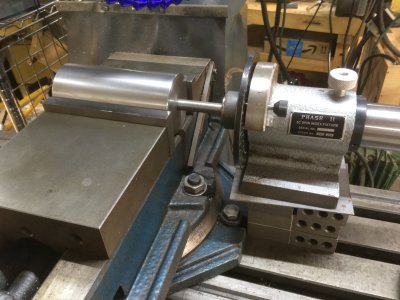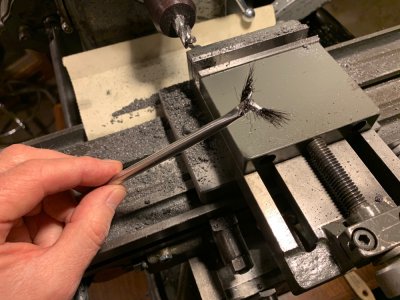I liked the tilt table with a cylinder that is held in the vise and the cylinder can be rotated to the desired angle. I had the stuff on hand, so made it up. As you can see in the first picture, I used a spin indexer to rotate the cylinder so that I could put some small flats at zero, 30 and 45 degrees. These flats let you position the table at exactly the right angle by using a small wedge, like a piece of tool steel or such and keep the cylinder oriented correctly. I was pleased at how accurate this works out to be, as the second picture shows using a reference 45 triangle to check. 0.001 movement over about 3" is routinely achievable just with the wedge/shim approach. If there were a particular unique angle you needed, it's simple to add another flat.
Incidentally, another shortcut, I sorted out two small Samarium Cobalt magnets which were equal thickness within 50 millionths, freeing up a hand or two during verification alignment.
I also had a small not very useful vise laying around in the way, so I fly cut the base, trimmed the sides square, and otherwise plumbed it via machining on the mill, and mounted it to the tilt plate with 4 bolts that hold the vise in X or Y oriented alignment as needed. Of course you could add mounting holes on the tilt plate in advance, or to fit a particular project. I will probably stop at this level until some need comes up.
Very well done.
I have a question about the angled steel baron the side of the vice at the fixed jaw area. Is that to stop movement of the fixed jaw when tightening the work in the vice and if it is how well does it work.
Ron



